- Home
- Winston Groom
The Aviators Page 6
The Aviators Read online
Page 6
At 8:30 a.m. Doolittle took off for San Diego, flying across the desolate mountains and deserts of the Southwest. By the time he reached the Arizona border he had been in the air close to fifteen hours and the monotonous drone of the engine was lulling him to sleep. Then, out of an otherwise clear sky, a light rain began to fall, which the prop wash threw over the top wing in a steady icy stream that dripped down the back of Doolittle’s neck, annoying him to the point that he stayed awake.
Late that afternoon he landed in San Diego on the Pacific, twenty-two hours and thirty minutes after he had taken off from Pablo Beach on the Atlantic, becoming the first person ever to cross the continental United States in less than a day. Accolades great and small issued from the national press and the popular new medium of radio.
This was Doolittle’s first brush with national fame. He received congratulatory letters not only from the chief of the Army Air Service but, more important to him, from General Billy Mitchell, whom he greatly admired. It also earned him his first Distinguished Flying Cross, for demonstrating “the possibility of moving Air Corps units to any portion of the United States in less than 24 hours.”
MEANWHILE, THE DOOLITTLES had started a family, beginning with James Jr., born October 2, 1920, then John, who came along June 29, 1922, both at the post hospital at Fort Sam Houston, Texas. When Joe wasn’t looking after the boys she had a Chinese cook teach her how to prepare Mexican food and acquired some odd pieces of furniture to make a home. In time, the Doolittles’ residence, humble as it was, routinely became a kind of center of gravity for the best and brightest on the posts where they were stationed. There was always food, drink, and laughter, and serious, intellectual conversations as well, and a warmth that grew out of lasting friendships formed amid the gray trials of army life.
Following a year of service as a test pilot and performer in aerobatic exhibitions, Doolittle took advantage of an army program to study for a master’s degree in aeronautical engineering at the Massachusetts Institute of Technology.
In the fall of 1923 he, Joe, and the two boys moved into an apartment near Cambridge. As a master’s thesis Doolittle planned to compute the aeronautical stresses and forces it would take to break up a plane in the air—with himself as guinea pig.
He took planes for test flights and pushed them to their outermost limits, diving at speeds often exceeding 200 miles per hour, inducing cracks in the structural frame and other components just short of having the plane come apart with him in it. It was an extremely dangerous way to find out a plane’s limitations, but the only way. Using delicate instruments he found, for instance, that the habit of some pilots to tighten the bracing wires running along the wings in fact promoted wing failure.
Doolittle also investigated pilot blackouts induced by these speeds and maneuvers. Again, flying alone, he used himself as a guinea pig. He found that any extended acceleration of 4.5 G§ resulted in a complete loss of consciousness, and further he concluded that if such acceleration continued for more than ten to twelve seconds it would be fatal.
The thesis was such a success that a paper developed from it was translated into a dozen languages and circulated abroad, earning Doolittle international fame as well as his second Distinguished Flying Cross. He applied for, and was granted, the opportunity to study for his doctorate at MIT.
The subject of his study was the effect that wind velocity had on flying an airplane. Doolittle chose this as a theme because he knew experienced pilots held differing opinions about it, and he wrote the paper so as “to be understood by the average pilot.” But when he turned in a draft of his doctoral dissertation his advisers rejected it.
On further inquiry, Doolittle was told his paper wasn’t studious-enough looking, that it needed more mathematical calculations, graphs, charts, etc.; in other words, it needed to be tarted up so as to look more scholarly. He went back to the drawing board, and in June 1925 the Massachusetts Institute of Technology awarded him a doctorate in aeronautical sciences, one of the first of its kind. Doolittle was proud of that, but for the rest of his life he regretted that he had rewritten the paper so it would “be locked away and never read by anyone.” He thought it could have saved lives.4
BY THE MID-1920S AIRCRAFT ENGINES had become increasingly powerful and public fascination with flying led to the great popularity of air racing competitions—which had come a long way and were a far cry from the days of the flying circuses. Since the end of the First World War the speed of aircraft had increased past 250 miles per hour and flying clubs throughout the world held races and offered silver loving cups as trophies and often handsome cash prizes to the winners. As with the setting of speed or distance records, the military services encouraged their pilots to enter these competitions as a way of publicizing themselves, if not actually justifying their existence. Jimmy Doolittle finished on top in many of these events, and his national reputation as a flying ace continued to grow. Air racing competition between the army and the navy pilots had become almost frenzied. Doolittle’s first crack at a championship came in October 1925, when the army entered him in the prestigious Schneider Cup, a seaplane race in Baltimore. The problem was that Doolittle had never flown a seaplane before.
In less than a week he was obliged to learn the techniques of flying a plane with an entirely new configuration and center of balance from anything he had ever flown before—not to mention taking off and landing on water. He had had to put pontoons on his sleek and powerful 610-horsepower Curtiss R3C racer, while the navy pilots had flown with them since their first days at flight school.
After the elimination in qualifying rounds of more than half the entrants in various crashes and malfunctions, the racing field now consisted of four planes: two navy pilots, an Italian pilot, and Doolittle. The racecourse was laid out as a 31.7-mile triangle in the Chesapeake Bay, marked off by tall pylons. The racers had to fly around the course seven times, for a total of about 220 miles. After observing qualification tests, Doolittle thought he saw a way to shave a little time by banking steeply past the pylons and gunning out of the turn, but he mentioned none of this to the navy pilots, whose entourage included most of the U.S. Naval Academy at Annapolis as well as various admirals, Washington naval attachés, and a squadron of navy planes that flew in formation over the spectators. Also present was Orville Wright, who had started it all back in 1903. It was a sunny but choppy autumn day on the Chesapeake. To compete with the navy’s flying squadron the army had sent a blimp that cruised out over the bay “like a majestic silver fish,” according to a report in Aviation magazine.
Doolittle drew first position. His plan was to climb rapidly, then dive sharply as he passed the pylons, banking steeply to get a speed advantage. Once Doolittle had the lead he kept it; the Italian plane dropped out and it became a race between the army and the navy.
Then one of the navy pilots developed engine trouble and had to land on the bay, and on the final lap the other found his plane engulfed in flames from an engine fire (somehow he brought the aircraft safely down on the water). U.S. Army Lieutenant Jimmy Doolittle won the day at a record-setting average speed of 232.573 miles per hour, while the two planes entered by the U.S. Navy had to be ignominiously towed back to shore in full view of the navy brass and the corps of midshipmen from the United States Naval Academy.
Doolittle’s grease-smeared smile was featured prominently in the sports pages at home and abroad, including the New York Times, which, in noting that Doolittle had won “the world’s premier seaplane trophy,” observed cattily that “the Army men never seem to take tows in Neptune’s realm.”
BY THE MID-1920S BILLY MITCHELL’S attacks against politicians and the army brass had become more strident and relentless, as he accused them of ignorance and even willful collaboration in the deaths of military pilots as the result of a lack of funding and oversight. At first the commander of the Air Corps tried to silence Mitchell by reducing his rank and banishing him to duty in San Antonio instead of making him permanent second i
n command, slotted for the future top spot.
This only made Mitchell more outspoken and caused him to publish an accusatory book lambasting the Navy and War Departments, Congress, and even the president. In 1925 he used the occasion of several fatal air crashes to charge that the administration of the national defense was “incompetent, criminally negligent, and almost treasonable.” President Calvin Coolidge convened a board of business and military men to construct some coherent national policy regarding aviation, headed by the Morgan & Co. banker Dwight W. Morrow (the future father-in-law of Charles Lindbergh).
Called to testify before the Morrow commission, Mitchell lashed out with the same caustic verbiage he had been using to condemn the administration, naming names, which of course filled the press columns day after sensational day. That was enough for Coolidge who, using his powers under the articles of war, preferred court-martial charges through the War Department against Mitchell for insubordination. The specific allegation was that Mitchell’s conduct was “prejudicial to good order and military discipline” and “of a nature to bring discredit upon the military service.”
The case quickly developed a circus atmosphere. The trial, begun in October 1925, was held in a decrepit warehouse near the Capitol in Washington, D.C. The court was composed of U.S. Army generals—including the young major general Douglas MacArthur—none of whom were fliers or had any experience with aviation.
The military judge in the case straightaway agreed with the prosecutor that Mitchell’s guilt or innocence was not dependent on the truth of his accusations against the higher authorities, only whether they were prejudicial to good martial order and whether they discredited the military organization, a legal confinement that severely hamstrung Mitchell’s planned defense and limited him from making the trial a cause célèbre for the promotion of airpower.
Public sentiment was on the side of Billy Mitchell, and the press slanted their reporting toward him, too, since he always provided good copy. Among the throng of spectators was the humorist Will Rogers, who had taken his first plane ride with Mitchell. It was reported that hundreds of spectators mobbed the sidewalks trying to get into the courtroom, including mink-draped society matrons “in luxuriously equipped limousines,” who had to compete for seats with the military, the press, and hoi polloi.
Doolittle and his fellow flying officers continued to agree with much of what Mitchell said, but Jimmy again opined that Mitchell “had gone overboard in his criticisms.” Eddie Rickenbacker, however, was under no such constraints as Doolittle and the other active duty servicemen; he was free to speak his mind and did so with acerbic gusto when it came his time to testify about his former boss.
IN 1926 THE CURTISS-WRIGHT CORPORATION asked the army to grant Doolittle extended leave to help in its effort to market the Curtiss P-1 Hawk fighter in South America. Doolittle would become, in effect, a “flying salesman, [to] demonstrate the plane’s capabilities in flight, and prove that it was the finest pursuit airplane in the world.” It was a smart move on Curtiss-Wright’s part. Ever anxious in peacetime to unburden itself of another salary to pay, the army promptly acceded to the request. For Doolittle it was a dream assignment. The money was good and he got extra for doing trick maneuvers—his specialty.
Doolittle’s first assignment was the government of Chile, and in April of 1926 he boarded a freighter and steamed through the Panama Canal with a crated P-1 Hawk in the hold and a skilled Curtiss mechanic as his traveling companion.
Doolittle did not have a captive audience when he reached Santiago, a dirty, sprawling metropolis in the foothills of the Andes. Pilots from England, Italy, and Germany had already arrived to peddle their wares. “I wasn’t worried about the British or Italian models,” he said. “It was the German Dornier flown by Karl A. von Schoenebeck that was the greatest threat.”
Schoenebeck, it seems, had been an ace in Richthofen’s famous Flying Circus that had clashed so often with Eddie Rickenbacker’s Hat in the Ring squadron on the Western Front. The flying shows would begin in June at the aerodromo El Bosque, on the outskirts of town.
Ten days before the aerial demonstrations the Chilean aviators threw a party for the foreign fliers at their officers’ club, a handsome stone building in downtown Santiago dating to colonial times. As the party gathered steam, the visiting officers were introduced to the pisco sour, “a delightful specialty of the fun-loving Chileans,” which combines three ounces of pisco, a clear brandy of Spanish origin, with sugar, lemon juice, and ice (note: three ounces of alcohol in a single drink is more than twice the dose of a usual American cocktail). Let Jimmy Doolittle pick up the story from here.
At some point the name of the silent film actor Douglas Fairbanks was raised, whose “balcony-leaping, sword-playing swashbuckling roles” had excited the fancy of the Chilean pilots.
As the evening wore on, and after swigging several or more of the pisco sours, Doolittle announced that Fairbanks’s stunts weren’t particularly unusual. In fact, said he, all American children learn to do those things. Doolittle’s command of Spanish was not as good as he thought, but when that statement was finally translated the Chileans’ “eyebrows raised in doubt.”
“Inspired by the pisco sours,” Doolittle said, “I upended into a handstand, and ‘walked’ a few paces.” This polished gymnastic exhibition delighted the Chilean hosts, who clapped and shouted ole! Doolittle then entertained them with a series of flips, which electrified the crowd and elicited even more handclapping and shouting.
One of the Chilean pilots offered that he had seen Fairbanks perform a handstand on a windowsill, which struck Doolittle as “reasonable,” so he went to an open window, climbed through, and did a two-hand stand on the two-foot-wide ledge. This led to a one-hand stand, which, after more ovation, prompted the agile former boxer and gymnast to overextend himself, as it were, with a stunt from his tumbling days.
“Grasping the inside of the ledge with one hand,” Doolittle said, “I extended my legs and body parallel with the courtyard, one story below. This isn’t difficult. Just requires a little practice and knowledge of body leverage.” Otherwise known as a one-armed body lever, this was an extremely difficult stunt, especially when “practice” was nonexistent.
Reveling in the applause from his hosts, Doolittle held his precarious position for a few seconds until, to his dismay, he felt the sandstone of the ancient ledge he was holding begin to crumble beneath his fingers and break off. There was nothing to be done. The laws of gravity took over.
Doolittle plunged about twenty feet from the second story to a stone courtyard, luckily landing feet first—if you can call breaking both your ankles lucky. That was the verdict when they got him to the hospital and X-rayed the damage. It was a sobering experience in more ways than one, as Doolittle quickly realized the foolhardiness of what he had done. A minimum of six weeks, the doctors told him, would have to pass before the bones healed. What was he to say to the people at Curtiss-Wright? Or to his superiors in the army? A drunken stunt had put him hors de combat at a time when he might have sold planes and enhanced the army’s reputation immensely. Instead, he feared he would become a laughingstock. To complicate things further, the Chilean doctors misread the X-rays and his plaster casts were put on the wrong feet, each fracture being different, resulting in the bones being improperly set.
Doolittle had no intention of lying in a hospital bed while others sold their planes to the Chilean air force. After nine days in traction he had his mechanic come with a hacksaw and cut him out of the plaster at the ankles, whereupon he escaped to the airfield, clattering across the runway on crutches to be lifted aboard his plane.
With metal clips bolted on his flying shoes by the mechanic to hold his feet on the pedals, on June 24, 1926, Doolittle did a practice demonstration with the Curtiss P-1 Hawk. He flew all of his snap rolls to the right that afternoon and his right cast broke.
That night he went back to the hospital to have the cast replaced and next day went out and flew a
demonstration with all his snap rolls to the left.
The left cast broke.
Back at the hospital the doctors called him a “crazy Yankee” and blackballed him, so Doolittle found a German cast maker in town who fixed him up with extra heavy-duty prostheses that were reinforced by, of all things, women’s steel corset stays. These worked fine, but he still had to hobble around on crutches.
By the day of the big airplane demonstration, word of Doolittle’s gallant persistence had gotten out, and crowds at the air show increased tenfold. Chileans are fond of underdogs and apparently viewed Doolittle in the same way as they might a one-legged bullfighter.
He was driven to the flying field and assisted into the cockpit. The president of Chile, Carlos Ibáñez del Campo, was there, along with his cabinet and a large contingent of army and navy officers. Von Schoenebeck was already aloft, demonstrating his aerobatic routine in the Dornier. Doolittle decided he needed some competition, “So I took off, and climbed to meet him,” he said.
Doolittle flew up beside a surprised von Schoenebeck and wagged his wings, the sign for a mock dogfight. The German saluted and the fight was on. Try as he might, it turned out there was no maneuver von Schoenebeck could perform to keep Doolittle off his tail, and he went through them all—barrel rolls, dives, Immelmanns, sideslips—but every time the German looked back there was the Curtiss Hawk, dogging him like a pesky horsefly.
Doolittle was enjoying himself immensely. He knew his P-1 was faster (400 horsepower to the Dornier’s 260) and more maneuverable, and he whipped all around the German with close passes, then zoomed to show the Curtiss’s superior speed. After enough of this humiliation, von Schoenebeck broke off the engagement. As he began to descend, Doolittle saw that the fabric covering the Dornier’s upper wing was coming apart.‖ Doolittle then went through his aerobatic routine and as a finale sped across the field in front of the spectators, flying upside down at treetop level. The audience clapped, cheered, and threw hats into the air as Doolittle was lifted out of his cockpit, and several of the Hawks were sold that day.

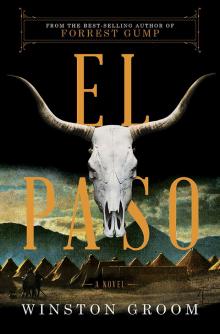 El Paso
El Paso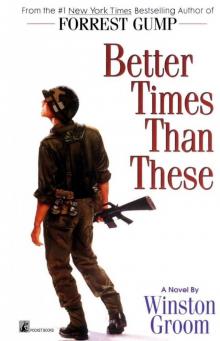 Better Times Than These
Better Times Than These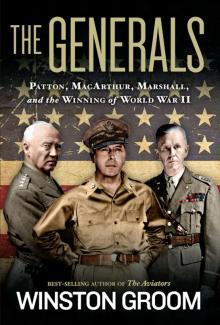 The Generals
The Generals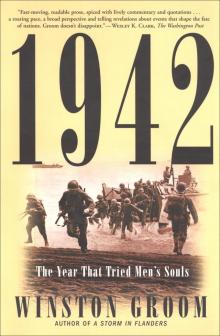 1942: The Year That Tried Men's Souls
1942: The Year That Tried Men's Souls Forrest Gump
Forrest Gump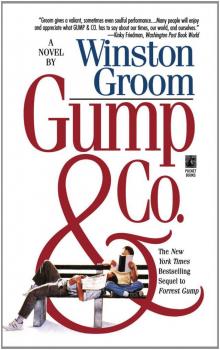 Gump and Co.
Gump and Co.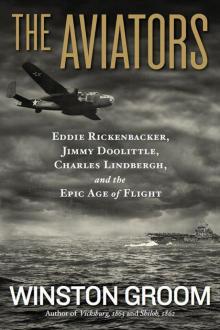 The Aviators
The Aviators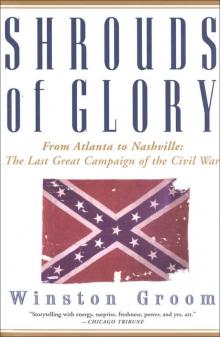 Shrouds of Glory
Shrouds of Glory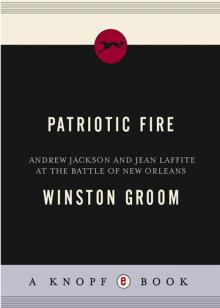 Patriotic Fire
Patriotic Fire Kearny's March
Kearny's March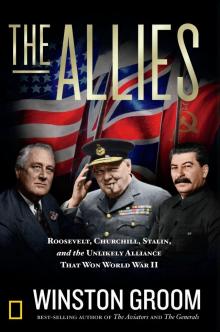 The Allies
The Allies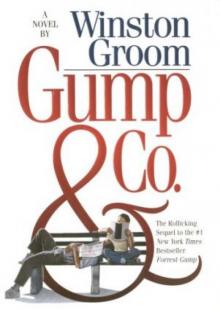 Gump & Company fg-2
Gump & Company fg-2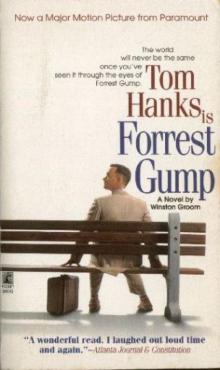 Forrest Gump fg-1
Forrest Gump fg-1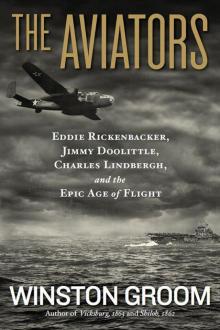 The Aviators: Eddie Rickenbacker, Jimmy Doolittle, Charles Lindbergh, and the Epic Age of Flight
The Aviators: Eddie Rickenbacker, Jimmy Doolittle, Charles Lindbergh, and the Epic Age of Flight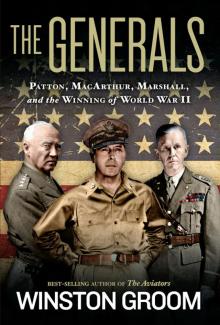 The Generals: Patton, MacArthur, Marshall, and the Winning of World War II
The Generals: Patton, MacArthur, Marshall, and the Winning of World War II